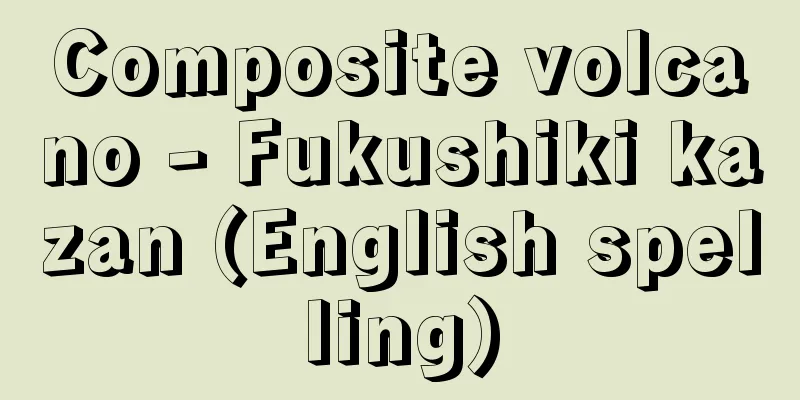Rainy season short sleeves in the old Hachijo - Tsuyu koso de Mukashi Hachijo

|
Kabuki script. Sewamono. Four acts. Written by Kawatake Mokuami. Commonly known as "Kamiyui Shinza." First performed in May 1873 (Meiji 6) at the Nakamuraza in Tokyo by Onoe Kikugoro V and others. It is an adaptation of the human interest story "Shirokoya Seidan," which was a favorite of Shunkintei Ryuo at the time. Okuma, the daughter of the lumber merchant Shirokoya, was in love with the assistant Tadashichi, but for the sake of her family, she decided to marry a husband with a dowry. The regular Kamiyui Shinza persuaded Tadashichi to take Okuma out and imprisoned him in his house in Fukagawa. After being pushed away by Shinzo at Eitai Bridge, Chushichi tries to kill himself out of shame, but is saved by the boss, Yatagorou Genshichi. Genshichi comes to retrieve Okuma at the request of Shirakoya, but Shinzo humiliates him and chases him away, but is unable to stand up to the cunning of the landlord, Chobei, and reluctantly returns Okuma. Later, Genshichi gets revenge by killing Shinzo at Enma-do Bridge. This masterpiece skillfully depicts the customs of the Edo downtown area with scenes of the cuckoo and the first bonito of the rainy season, and depicts the seasonal feeling of the end of the rainy season. Highlights include the sharp challenge that the petty villain Shinza delivers when he beats up Chushichi in "Eitaibashi," and in "Shinsanuchi," where he initially defeats Genshichi but is threatened and outwitted by Chobei, who then takes half of Okuma's severance payment. The role of Shinza was played by Kikugorou VI, who refined the direction of his father Kikugorou V, demonstrating the essence of the art of live comedy, and this role has been taken on by Onoe Shouroku II and Nakamura Kanzaburō 17. [Toshiaki Matsui] Source: Shogakukan Encyclopedia Nipponica About Encyclopedia Nipponica Information | Legend |
|
歌舞伎(かぶき)脚本。世話物。四幕。河竹黙阿弥(もくあみ)作。通称「髪結新三(かみゆいしんざ)」。1873年(明治6)5月、東京・中村座で5世尾上(おのえ)菊五郎らにより初演。当時、春錦亭柳桜(しゅんきんていりゅうおう)が得意にしていた人情噺(ばなし)『白子屋(しろこや)政談』の脚色。材木商白子屋の娘お熊は手代忠七と恋仲だったが、家のため持参金付きの婿をとることになる。出入りの髪結新三は忠七をそそのかしてお熊を連れ出させ、深川のわが家へ監禁する。永代橋で新三に突き離された忠七は面目なさに死のうとし、顔役弥太五郎源七(やたごろうげんしち)に救われる。白子屋に頼まれてお熊を取り戻しにきた源七を、新三は逆に辱しめて追い帰すが、家主(いえぬし)長兵衛の老獪(ろうかい)な掛け合いには頭があがらず、しぶしぶとお熊を返す。のち源七は閻魔堂(えんまどう)橋で新三を殺して仕返しをする。時鳥(ほととぎす)や初鰹(はつがつお)の風物を巧みに配して梅雨(つゆ)明けの季節感を写し、江戸の下町風俗を淡彩に描いた傑作。小悪党新三が「永代橋」で忠七を打ち据えるぴりっとした啖呵(たんか)や、「新三内(うち)」で初め源七をやりこめながら、長兵衛には脅かされたりすかされたりしたすえ、お熊の手切れ金を半分も上前をとられるやりとりが見どころ。新三の役は6世菊五郎が父5世の演出を洗練させて生世話(きぜわ)芸の精髄を示し、これを2世尾上松緑(しょうろく)、17世中村勘三郎が受け継いでいる。 [松井俊諭] 出典 小学館 日本大百科全書(ニッポニカ)日本大百科全書(ニッポニカ)について 情報 | 凡例 |
<<: Tale of the Open-air Court - Tale of the Open-air Court
Recommend
Kainanga - Kainanga
… Clans with exogamy are widespread throughout th...
Galapagos Land Iguana - Galapagos Land Iguana
...They hatch in about 110 days. The Galapagos la...
Cavatina (English spelling) cavatina Italian
A solo piece in 18th and 19th century operas and ...
Pendergast, T.
... Meanwhile, in the 1920s and 1930s, black big ...
Horse market - bashi (English spelling) ma-shi; ma-shih
A periodic market held during the Ming Dynasty in ...
Iskra - Iskura (English spelling) Искра/Iskra
The first revolutionary Marxist illegal newspaper...
Gastric mass examination
...For this reason, it is important to have regul...
Katotia - Katotia
…[Koezuka Takashi] A huge number of prehistoric r...
Angilbert - Angilbert
…It is also worth noting that England had two poe...
Tachiai - Tachiai
(1) One of the arts of Sarugaku and Dengaku. It w...
Olive kernel
…One corresponds to the spinal trigeminal nucleus...
Yin scale - Yin onkai
A type of Japanese scale. The most basic form is M...
Parnasse contemporary (English)
…This is a translation of the term l'école pa...
Dark Pass - Kuragari Pass
A pass located almost in the center of the Ikoma ...
Areca palm (English spelling) Chrysalidocarpus lutescens; areca palm; butterfly palm
It is a palm plant native to Madagascar. It was on...









